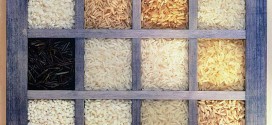Soil Testing Facilities in Kerala
There are 14 soil-testing labs in Kerala, i.e., one for each district. A central soil testing labs is functioning at Parottukonam, Nalanchira to supervise, coordinate and control the activities of the different soil testing labs in the state.
There are 9 mobile soil-testing labs with a testing capacity of 50 samples per day one each in 9 districts (except districts of Ernakulam, Pathanamthitta, Idukki, Wayanad and Kasargodu).
Soil Test Crop Response correlation Studies
Interpreted S.T. Data – best basis for fertiliser recommendation. But the response of the crop depends on other factor like plant population, crop variety, soil moisture, etc.- many methods were suggested to improve ST interpretations. The all India Coordinated Project for investigation on ST – crop response – started in 1967. The studies have indicated significant regression equation for different soil types for predicting crop response and for preparing suitable fertiliser schedules based on ST data. The purpose of ST crop response studies is securing and selecting the best ST method and the calibration of ST values for fertiliser recommendation – the studies enable to know the type of response curve operating in a set of soil-crop-agro-climaric condition, e.g., of each curves – linear, mitscherlich-bray, sigmoid, etc – curves are useful to determine fertiliser does to obtain economic yield – different approaches – critical level approach, percentage yield approach, targeted yield/prescription method .
Soil Test Summaries and Soil Fertility Map
Soil test data can be summarized to provide information on overall fertiliser requirements for specific areas and on the kinds of fertiliser materials and mixture most suitable for those areas. Helpful for planners and administrators in determining policies of fertilizer production, distribution and consumption – useful for researchers also – can be prepared soil wise, village wise, block wise or district wise. State wise or Country wise maps have also been attempted. Many ST summaries include tables giving the percentage of the total number of samples falling in different categories of classification – Low, medium and high. The nutrient index concept introduced by Parker et-al (1951) is particularly useful in formulating area wise fertilizer recommendation and in comparing the fertility levels of two areas.
For preparing village wise nutrient indices analytical data on about 50-200 samples for every 20-30 ha of evaluated area would be required. The analysis values of these samples should be summarized into percentage in each category for each nutrient and the percentage in category ‘low’ ‘medium’ ‘high’ multiplied by 1,2 and 3 respectively, the sum of the figures thus obtained should be divided by 100 to give the index or weighted average. An index below 1.66 is low, between 1.67 and 2.33 medium and above 2.34 is high – using these indices the current State wise or region wise fertiliser recommendation for each crop can be modified to suit the village better. These modified recommendations will be of use to farmers whose fields have not been individually tested.
 Karshika Keralam – A site for Agricultural Enthusiasts
Karshika Keralam – A site for Agricultural Enthusiasts
